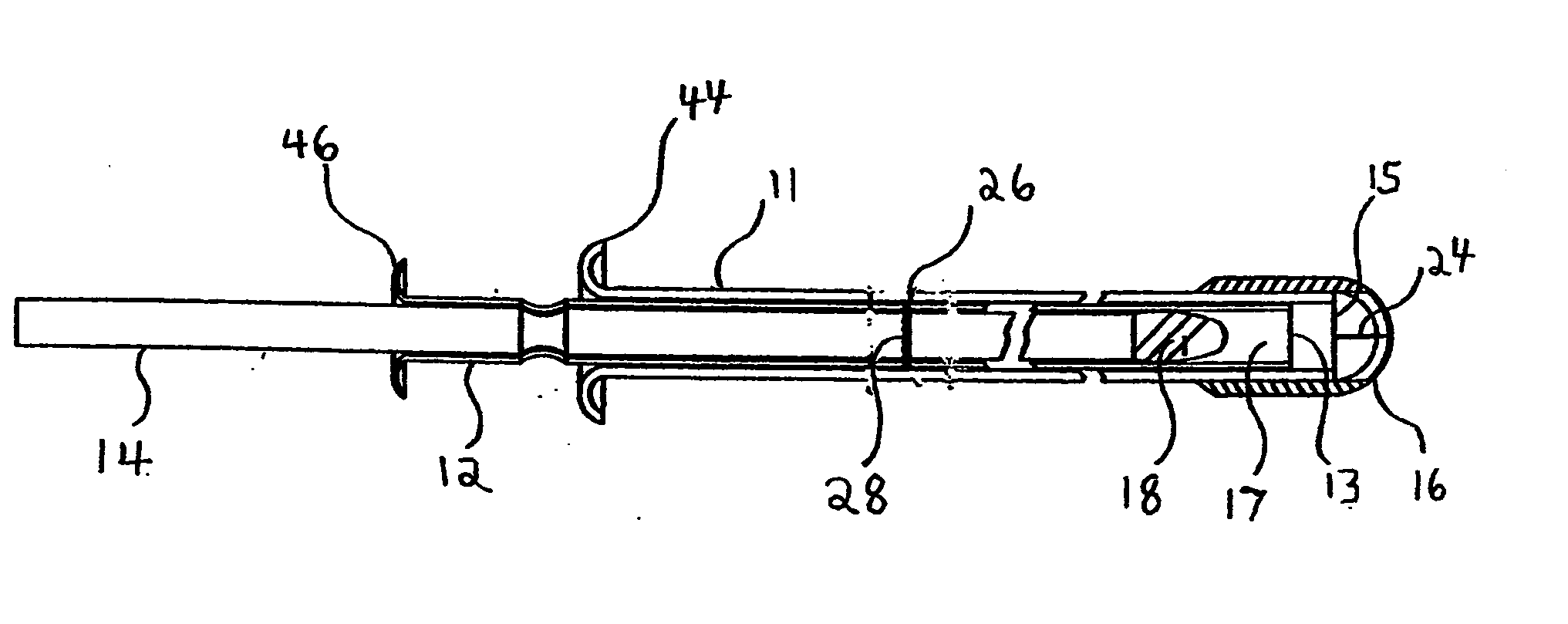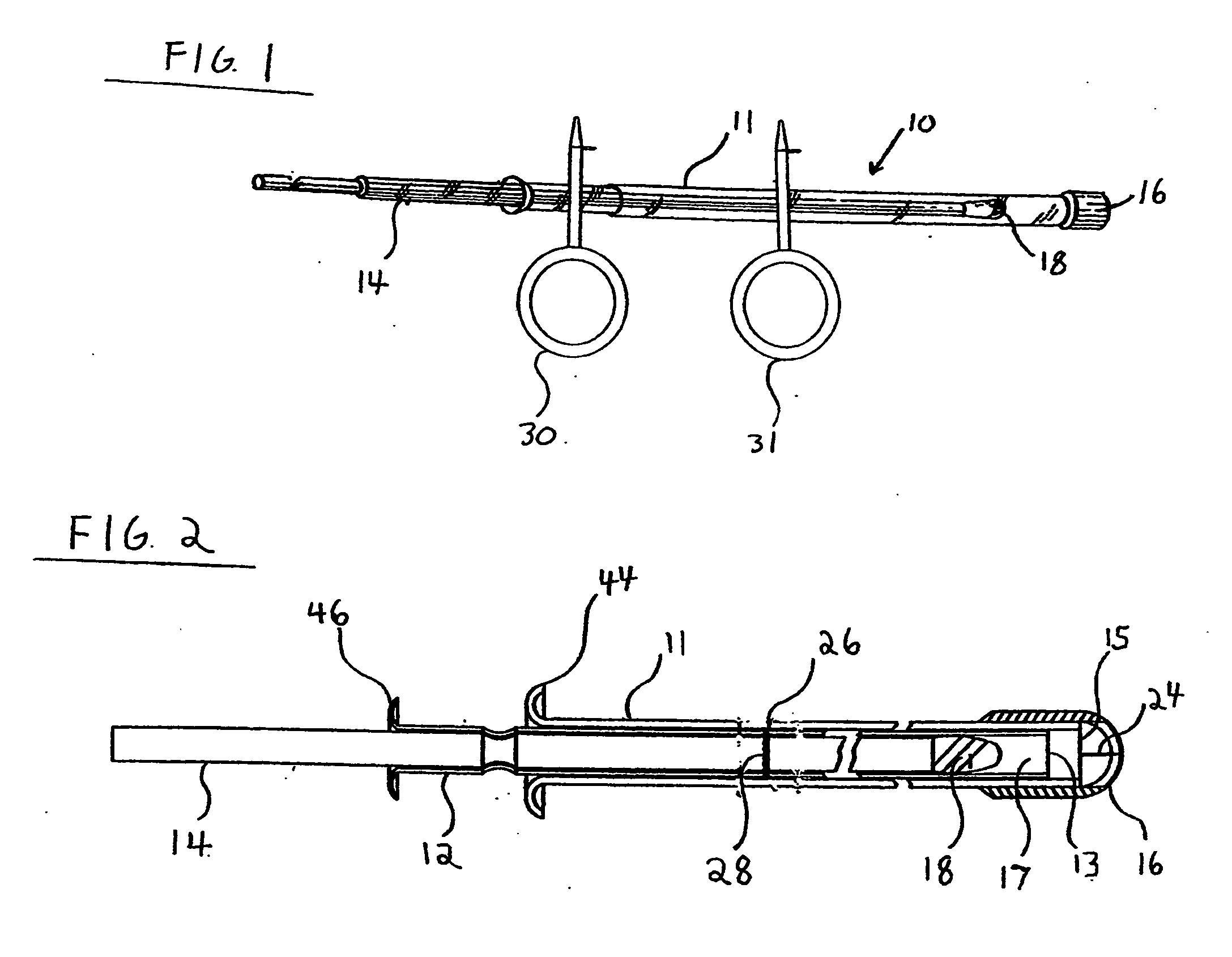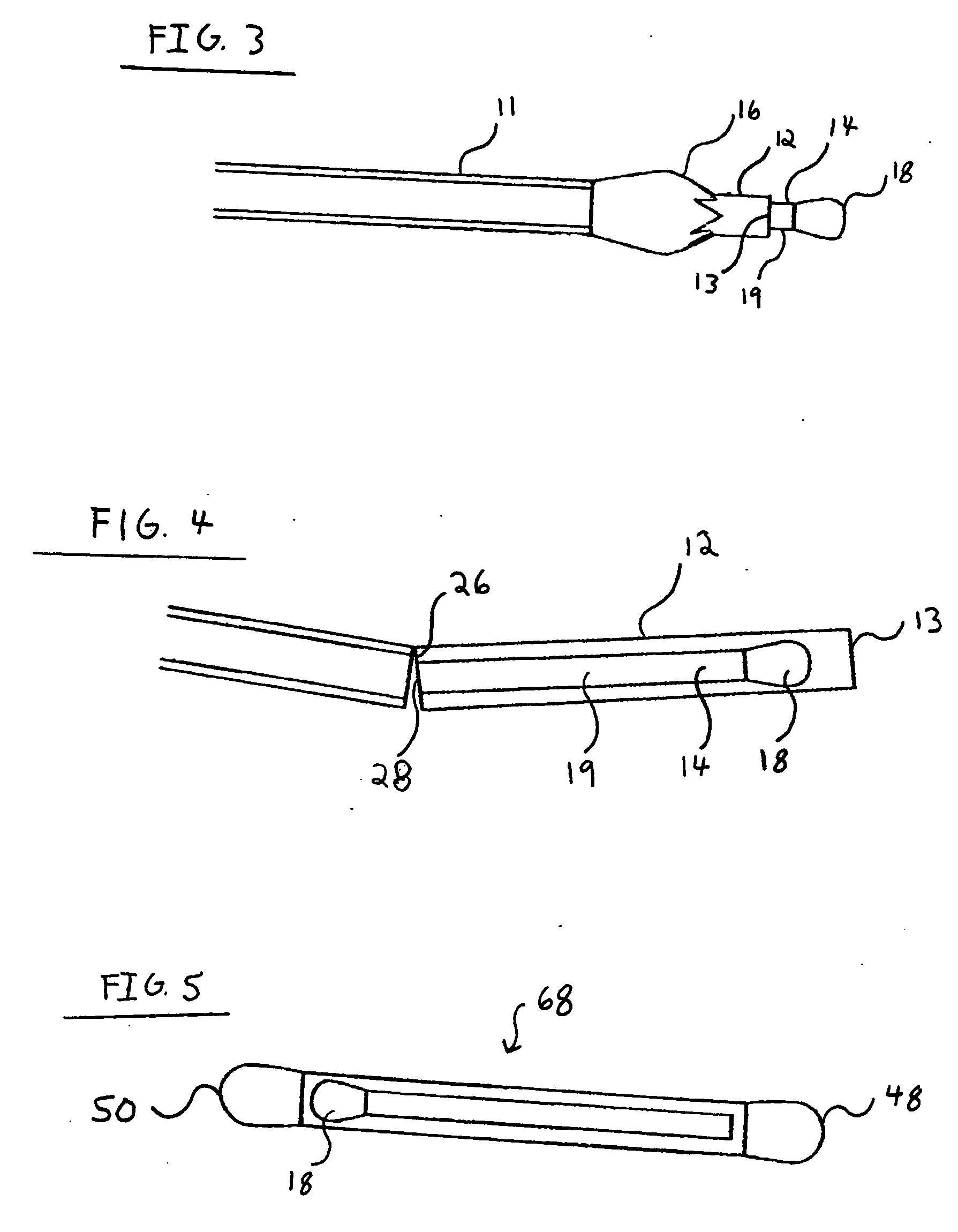Culture swab with protective cap and safety pin
a technology of protective cap and safety pin, which is applied in the field of new veterinary devices or instruments, can solve the problems of increasing the cost of the final culture collection device product, affecting the quality of the final culture collection device, and the element that will ultimately collect the sample can be prematurely contaminated, so as to reduce the chance of contamination, facilitate the collection of samples, and facilitate the storage of the device.
- Summary
- Abstract
- Description
- Claims
- Application Information
AI Technical Summary
Benefits of technology
Problems solved by technology
Method used
Image
Examples
Embodiment Construction
[0036] The present invention and the various features and advantageous details thereof are explained more fully with reference to the non-limiting embodiments described in detail in the following description.
[0037] The construction of a culture collection device, such as disclosed in the present inventor's prior U.S. Pat. No. 4,586,604 and U.S. Pat. No. 4,457,313 is well-known to those skilled in the art and therefore a detailed description thereof is not necessary to fully understand the present invention, which is directed to novel improvements in the construction of the protective cap 16 and the addition of one or more elements, specifically on or more safety pins 30 and 31.
[0038] The invention is shown in FIGS. 1 and 2 which depict a veterinary device or instrument 10 that is comprised of an outer member 11, preferably a plastic tube, which has a protective cap or tip 16, preferably a injection molded plastic cap, on its first end. When used as a collection device 100, the dev...
PUM
| Property | Measurement | Unit |
|---|---|---|
| angle | aaaaa | aaaaa |
| angle | aaaaa | aaaaa |
| diameter | aaaaa | aaaaa |
Abstract
Description
Claims
Application Information
 Login to View More
Login to View More - R&D
- Intellectual Property
- Life Sciences
- Materials
- Tech Scout
- Unparalleled Data Quality
- Higher Quality Content
- 60% Fewer Hallucinations
Browse by: Latest US Patents, China's latest patents, Technical Efficacy Thesaurus, Application Domain, Technology Topic, Popular Technical Reports.
© 2025 PatSnap. All rights reserved.Legal|Privacy policy|Modern Slavery Act Transparency Statement|Sitemap|About US| Contact US: help@patsnap.com



